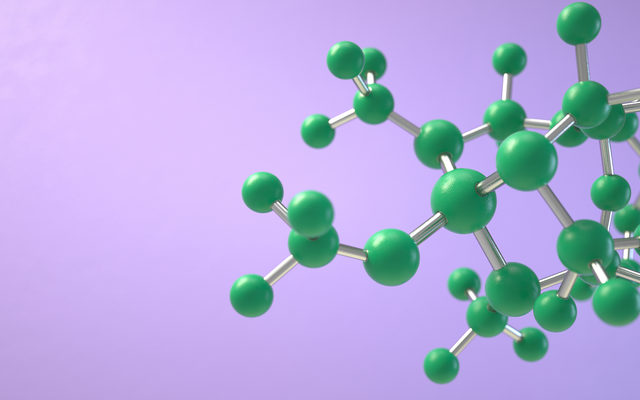Addressing Specific Targets and Dealing with Target Engagement

Understanding a drug’s engagement to a biological target is a critical part of the target validation and drug discovery process. Assays for target engagement in living cells can confirm mechanisms of action for drugs which is vital for the translation of any potentially therapeutic molecule. At Discovery US 2022, our expert panel gathered to discuss the intricacies of addressing specific targets and dealing with target engagement. Moderating the panel discussion was Jing Yang, Chief Scientific Officer at Basecure Therapeutics, who introduced the panellists to the audience.
- Accelerating Target Discovery with Genomic and CRISPR Techniques
- Examining Target Identification and Validation in Drug Discovery
Govindan “Subbu” Subramanian is a Senior Director at Gossamer Bio. Subramanian has over 20 years of experience applying and leading computational molecular discovery spanning small molecule, peptides, biologics, and biopharma, with previous experience at Zoetis and Sanofi.
Meghan Lawler is Director of Affinity Technology at Anagenex. Lawler received her PhD from Duke University exploring epigenetic complexes and how to disrupt their protein–protein interfaces. Lawler then worked at GSK in the DEL group before joining Anagenex where she has been for just over two years.
Technology for Target Engagement
The first topic of conversation was the use of technologies for target engagement. Subramanian was the first to tackle this area, he outlined his approach to target engagement. As a computational chemist, Subramanian said that the first harbinger of a potentially successful compound is the interaction between that molecule and the protein of interest.
“Often, we have a lot of false positives in computational approaches — so the first line of defence is to look at it experimentally,” he said. Subramanian specified two approaches that are taken in this regard: biophysical and biochemical. He said that he and his team tend to lean more towards the biophysical approach, “they’re a quick and easy way to get an idea of how the compounds actually bind and what kind of activity they demonstrate.”
There are also limitations with the biophysical approaches: restrictions on the types of techniques that are available and the types of ligands that are identifiable at the concentration. “So, we always need an orthogonal approach,” he said. “We bank on biochemical approaches for that, just to complement our biophysical approaches.” Subramanian said that a small molecule engagement with its target was the first sign of a lead, “and not downstream on what impact the target engagement makes on the pharmacology.”
Lawler also gave her thoughts on this topic. “After you do the initial screen, when you work out if you have the initial target engagement, the next downstream steps are to work out: is it active? And is it going to translate into a cell?” She said that translationally, there was a large drop off in success after target engagement is confirmed. Lawler suggested that larger scale screens upfront, aptamer screening in cells, and DEL screening in cells were all methods that could make translation stronger.
“There are so many assays for target engagement, but more is not necessarily better,” added Yang. She opted for paying more attention to translation in the journey from binding to activity assay, to in vivo assay and ultimately in human. “Each aspect will ultimately have different requirements,” said Yang.
“Translation from discovery to the clinic is where most of the time, in the discovery space, we don’t talk too much.” Yang said that in her 20 years’ experience, translation was a critical part sector of the field. “At the discovery stage we have to start to consider clinical biomarkers for target engagement, especially if you don’t have a readout from the blood,” she offered. Yang advocated for robust, non-invasive, and easy to use biomarkers that researchers can use in the clinic, early on in the discovery process. “These may take years to develop and must be integrated into the discovery space.”
Expanding Chemical Space
The next topic of discussion focussed on expanding chemical space. “When I started in the field, having a million compounds was a big deal. Now we are getting into the billions of compounds. What are we looking for in these billions of compounds? And how are you going to handle it?” said Yang.
Lawler was first to answer this question. She said that the large library sizes were a particular strength that Anagenex had found. “We can rapidly make libraries which are hundreds of millions of compounds large and therefore, we’re able to cover a wide variety of chemical spaces.” Techniques such as coupling the output data with machine learning are also used to expand the chemical space beyond what is usually available in a wet lab. “Then we can pair those two things to really drive finding a large variety of potential compounds for each of our targets,” added Lawler.
Subramanian looks at the chemical space slightly differently. The 20 amino acids that are observed in nature are what present themselves to therapeutic protein targets and in protein–protein interactions. Subramanian explained that these 20 amino acids can be split into five features based on their sidechains: hydrophobic, aromatic, polar, anionic, and cationic. “As chemists, we try to understand the biology on the same terms as nature.”
Amino acids are of course arranged in nature into alpha-helices, beta-sheets, and other backbones to present these side chains which chemists exploit using their compounds. “We use chemical scaffolds, so we’re catching up with nature as we try to expand on the chemical space,” said Subramanian.
Traditionally, chemists have looked at a select few protein families, GPCRs, kinases, and ion channels being a few among them. Subramanian explained that there has been a trend toward expanding into novel spaces which are mostly PPI (protein–protein interaction)-based — "so we don’t have a lot of chemical matter that we can lean on.” Subramanian suggested that there was a need for different representations of the sidechains in different chemical and functional forms in order to ensure researchers can access these natural biological interactions. “So there is a need to ever-expand this chemical space.”
The discussion continued onto a dynamic Q&A between the experts both on the panel and in the audience. To see on-demand video content of presentations and panel discussions, plus exclusive content and discussion groups, you can learn more about our membership offerings.
Our Organ Modelling Discovery Congress addresses an important and expanding field which provides new understandings in organ functionality and novel approaches to drug development.





.png)

